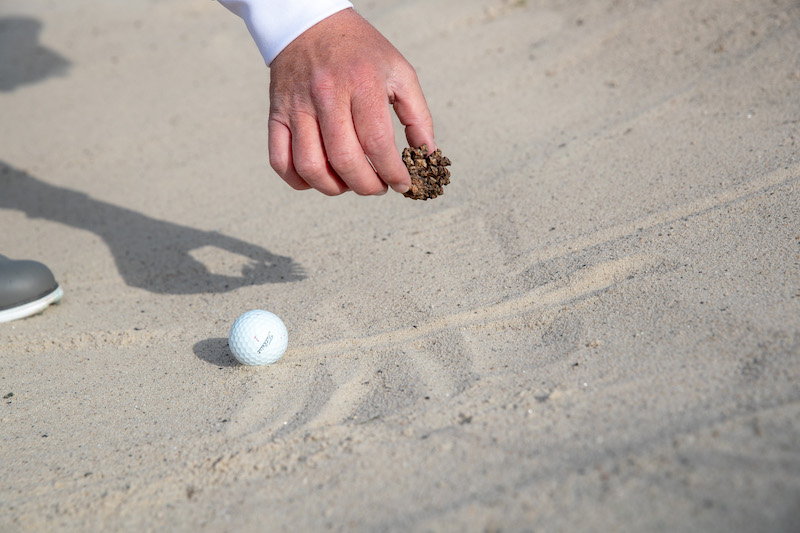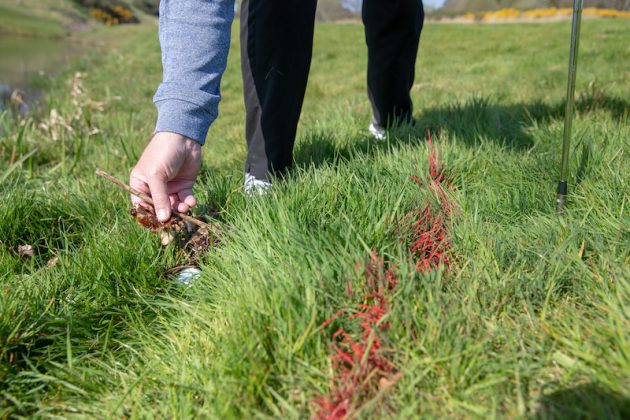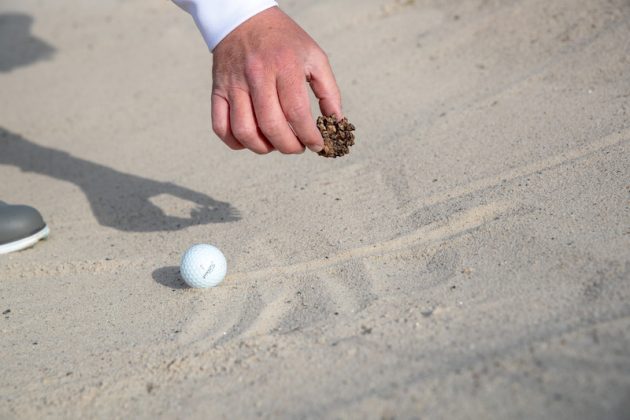What Are Loose impediments In Golf?
Most golfers will have heard of the term, but what exactly are loose impediments in golf and what can you do with them? We explain all...


Most golfers will have heard of the term, but what exactly are loose impediments in golf and what can you do with them? We explain all...
Watch: Try your hand at our Rules quiz!
What Are Loose impediments In Golf?
Under the previous version of the Rules (effective from January 2016), loose impediments had a whole Rule to themselves – Rule 23.
Following major revisions to the Rules in January 2019, that is no longer the case. They now form a small part of a broader Rule covering loose impediments and movable obstructions – Rule 15.
The primary reason for this is that you are now allowed to touch and remove loose impediments in both bunkers and penalty areas, which you couldn't do previously.

What are loose impediments in golf?
Subscribe to the Golf Monthly newsletter to stay up to date with all the latest tour news, equipment news, reviews, head-to-heads and buyer’s guides from our team of experienced experts.
Before we go into a little more detail, let's clarify what is and isn’t a loose impediment. To do this we need to visit the Definitions towards the back of the Player’s Edition of the Rule book.
This defines a loose impediment as…
Any unattached natural object such as:
- Stones, loose grass, leaves, branches and sticks,
- Dead animals and animal waste,
- Worms, insects and similar animals that you can remove easily, and the mounds or webs they build (such as worm casts and ant hills), and
- Clumps of compacted soil (including aeration plugs).

You hope you might never have to remove a dead badger or animal waste to allow you to play your next shot unimpeded, but we're sure such things have happened and do happen!
A word of warning though, the definition goes on to say…
Such natural objects are not loose if they are:
- Attached or growing,
- Solidly embedded in the ground (that is, cannot be picked out easily), or
- Sticking to the ball.
So, take extra care to check whether the thing you think is loose and removable is definitely not still attached or growing. And don’t be tempted to try and remove any unattached wet blades of grass sticking to your ball.
'Special cases' to note
Just to nail down the detail, the definition concludes with some ‘special cases’…
- Sand and loose soil are not loose impediments.
- Dew, frost and water are not loose impediments.
- Snow and natural ice (other than frost) are either loose impediments or, when on the ground, temporary water, at the player’s option.
- Spider Webs are loose impediments even though they are attached to another object.
Perhaps the most important one to note here is the first one. While you may brush sand and loose soil away on the putting green, they are not loose impediments elsewhere on the course. So don’t be tempted to brush them away from the fringe or fairway.
The Rules around loose impediments in golf
Now we know what loose impediments are, what can you do with them under the Rules? Rule 15.1a has the answers. You may remove them anywhere on or off the course using a hand, foot, club or equipment or in any other way.
However, you do need to take care as Rule 15.1b goes on to warn that if you move your ball when removing a loose impediment, you incur a one-stroke penalty other than when your ball in play is lying on the putting green or teeing area or when you are searching for it.


In all instances you must replace the moved ball to where it originally lay, estimating the spot if you can’t be sure.
It’s important to remember that you need to exercise care when removing loose impediments close to your ball.
If your ball is resting against a pine cone or stone on a slope in a bunker, for example, you should probably leave well alone and play the ball as it lies. If you move your ball in removing the loose impediment, there will be a penalty

Note that under Rule 12.2a, there is no penalty when removing loose impediments from bunkers for any reasonable touching or movement of the sand in the process. It’s the ball itself you need to be extra careful of.
Parting shots
Finally, a few things that other Rules mention regarding loose impediments:
* Rule 10.3b confirms that the caddie as well as the player may touch and remove loose impediments.
* Rule 8.1a explains that you may not move a loose impediment into a position that would improve the conditions affecting your stroke. For example, to help you build a stance by kneeling or standing on it. The general penalty applies.
* Rule 11.3 highlights that when any ball is in motion (not just yours), you may not lift or move a loose impediment if it might affect where that ball comes to rest. So, if someone chips out from under a tree and you see it’s going to hit a fallen branch, don’t move that branch. If you do, again it’s the general penalty.

Jeremy Ellwood has worked in the golf industry since 1993 and for Golf Monthly since 2002 when he started out as equipment editor. He is now a freelance journalist writing mainly for Golf Monthly. He is an expert on the Rules of Golf having qualified through an R&A course to become a golf referee. He is a senior panelist for Golf Monthly's Top 100 UK & Ireland Course Rankings and has played all of the Top 100 plus 91 of the Next 100, making him well-qualified when it comes to assessing and comparing our premier golf courses. He has now played 1,000 golf courses worldwide in 35 countries, from the humblest of nine-holers in the Scottish Highlands to the very grandest of international golf resorts. He reached the 1,000 mark on his 60th birthday in October 2023 on Vale do Lobo's Ocean course. Put him on a links course anywhere and he will be blissfully content.
Jezz can be contacted via Twitter - @JezzEllwoodGolf
Jeremy is currently playing...
Driver: Ping G425 LST 10.5˚ (draw setting), Mitsubishi Tensei AV Orange 55 S shaft
3 wood: Srixon ZX, EvenFlow Riptide 6.0 S 50g shaft
Hybrid: Ping G425 17˚, Mitsubishi Tensei CK Pro Orange 80 S shaft
Irons 3- to 8-iron: Ping i525, True Temper Dynamic Gold 105 R300 shafts
Irons 9-iron and PW: Honma TWorld TW747Vx, Nippon NS Pro regular shaft
Wedges: Ping Glide 4.0 50˚ and 54˚, 12˚ bounce, True Temper Dynamic Gold 105 R300 shafts
Putter: Kramski HPP 325
Ball: Any premium ball I can find in a charity shop or similar (or out on the course!)